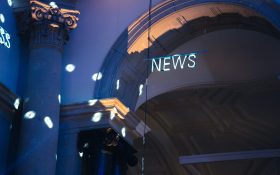A recent report commissioned and published by Cairns Regional Council, working closely with James Cook University, has exposed the true value of the arts in Gimuy/Cairns. The ‘State of the Arts’ Report (SoARTS) highlighted that the overall arts industry operating out of Gimuy generates an estimated $126 million in direct and indirect value-add to the regional economy. Furthermore, the report states that the arts generates an estimated $150 million in income (across industries).
This is a remarkable figure. With Gimuy styled as the “regional capital of arts and culture” in northern Australia, and an international tourism destination for decades, this figure is heartening. All in all, the report demonstrates that the arts is very much part and parcel of the region’s success and growth – an equal player as compared to the more traditionalist industrial considerations.
Tjapukai Aboriginal Cultural Park put Gimuy on the global destination map. It made huge headway not only for establishing tourism and the promotion of First Nations Culture(s), but to the ensuing responsibility to see this facet of our society further acknowledged and supported. Its current state of dormancy (mostly since Indigenous Business Australia’s buy-in in 2009) is a shame. However, since then, the Djabugay Aboriginal Corporation has reclaimed ownership over the business and world-class facility, with plans for a re-emergence post-2023. Thus, proving that Indigenous-led aspirations are key to bringing back to life such an important tourism, arts and Cultural asset.
While the ‘State of the Arts’ report also stands as a comprehensive “shopping list” for the arts – and it’s hoped by the industry that Council does strategise its investments around these findings – the one gap in the report is that it doesn’t go into detail around which arts organisations or companies generate what profit. This makes it more obscure to identify who are those generating larger contributions to the $150 million, which in turn makes it challenging to dissect the shortcomings of our industry, especially in regards to the Indigenous arts sector. When something is of such importance to our Peoples (and also to all Australians sharing our lands and who are our neighbours), it’s more crucial to keep it held to account.
Indigenous art sector viability
The recent Productivity Commission report into the sector has shone a beacon on the great value (economic as well as social and Cultural) Indigenous arts accrue, bear and deliver. It shows Indigenous arts made $250 million purely in sales during 2019-2020. But this success is severely impacted by imported fake Aboriginal art. What we do is inherently serious and it’s also serious business. The ‘State of the Arts’ report backs this on a more localised scale and on the arts more broadly.
Read: It’s agreed by government: Fake Art Harms First Nations Culture
In spite of this commercial and value-add success, our Indigenous art sector is facing a number of challenges, namely, on the human resources front. Skills development and skilled Indigenous personnel are at an all-time shortage in our sector, compared to other spaces of training and growth-planning. It doesn’t help our future growth when arts courses are being scrapped by James Cook University (JCU) – it’s an embarrassing move, callously spurred by so-called cost-saving measures.
JCU’s seeming contempt for the arts is at odds with the growth demands of the arts industry and the successes of it. All eyes now look to Central Queensland University in Cairns to fill this gap in arts education. Furthermore, as an inadvertent reflection or social commentary, it shows to our community that the arts is not to be considered as a pursuable career option. A university should know better and should value skills within the arts as practice, not just as theory.
It’s important to discuss issues at the same time as we laud our successes.
A look at key organisations
Across Gimuy’s key Indigenous arts organisations, including the Cairns Indigenous Art Fair (CIAF), Indigenous Art Centre Alliance (IACA), UMI Arts and the emerging Shine On Gimuy – management is facing challenges, including:
- an all too competitive funding strategy across jurisdictions and facets of the sector’s needs,
- lack of infrastructure, such as fit-for-purpose performance, showcase and keeping spaces, and even availability of festival equipment
- pay disparity compared to other, similar organisations across Australia,
- lack of skilled Indigenous professionals to assume key roles
- in parts, lack of integrity to back and truly service our peoples
- a void of any supreme authoritative body with oversight of organisations’ and projects’ Cultural and Social Responsibilities (not just legal and fiscal), and
- in parts, a lack of competency in governance and training (hindered by an outdated emphasis on Western governance frameworks, rather than working towards a marriage between them and modes of Cultural Governance).
Despite publishing a press release on its 2023 attendees and economic impact, CIAF is yet to release number figures in relations to actual sales from last year’s Art Fair and Art Market, which leads to speculation around the figures. Though, CIAF social impact successes are apparent, as it enters into the last year of its current Strategic Plan 2020-2024. CIAF has been successful over the past few years in implementing, and seeing six graduates of, its CIAF Evolution Traineeship.
CIAF has introduced two new roles in recent years: the Artistic Associate in 2017, and the Curatorial Associate in 2020 (occupied by the very talented Teho Ropeyarn). The former role has now seemingly been rescinded in lieu of an Event Producer in 2023. In recent weeks, CIAF has also announced a new role of Fashion Coordinator for its annual and enigmatic CIAF Fashion Performance. CIAF has issued a second round call-out for applications for a Chief Executive Officer (CEO) role; this role will see the dissolution of the General Manager position. Meaning, CIAF is seeking to elevate its leadership roles and diversify staff roles.
However, it should be mentioned that since my departure as CIAF’s Marketing and Communications Manager in early 2023, this post has not yet been advertised for fulfilment by the organisation. Though, it’s now occupied by former journalist and Assistant Minister for Tourism in the Campbell Newman Government (Queensland) from 2012 to 2015, Gavin King, who is non-Indigenous.
On the other hand, IACA is in a period of flux, with the Management Committee looking towards recruitment to rebuild a partial staff cohort. At present, the organisation has no corporate leadership and has halted its activities (such as its annual Arts Worker Training Program). This isn’t necessarily a bad thing; the organisation has been around for close to 15 years and it’s good to see it take time for reflection and seek to re-strategise. And re-strategise it ought to, given the fraught issues of uncertain provenancing, Indigenous art centre management and best practice that Australia is facing at the moment. IACA’s current membership framework and offerings cannot meet the expansion of and changes to our sector. IACA’s membership base must build to truly, and inclusively, define “Indigenous Art Centre” via this process, which should look to restructure the variety of entity statuses, to a conformity whereby artists are members and a Board of Directors is made up of them.
At present some Indigenous art centres are owned and/or governed by a board, with some housed in local government and overseen by elected councillors and council staff; others operate as project-funded enterprises (via Community Development Projects) with no sustainability, and more are emerging artist-run-initiatives with scarce funding options available to them. With the structures being so varied, it’s near impossible for any advocacy body (or authority) to set and police standards of best practice and governance systems. And, in the case of local government “ownership”, artists don’t have a direct say on matters.
On a similar note, there are major challenges at play across some Indigenous art centres around the country – challenges to which art centres from Tropical North Queensland are not immune. Namely, to do with the gatekeeping and Insertionism of some corrupt non-Indigenous players (and the myriad allegations of misconduct that often plague their level of unyielding control).
Read: Are you an imposter?
Umi Arts is another organisation with an incredible legacy. However, Umi Arts is now also without any visible corporate leadership, since former Chief Executive Officer, Peter Lenoy, left the role earlier in 2023. While the organisation does incredible work representing artists across the major showcase events (like art fairs) – and from several accounts gathered from what enquiries my level of membership with the organisation allowed me – it appears to be in a desperate governance position (for further reading, see documents published on its Australian Charities and Not-for-profits Commission listing).
Shine On Gimuy is an emerging festival and one the October, 2023 debut of which was highly anticipated. Its inaugural Artistic Director is Rhoda Roberts AO. The annual festival is set to stay, having been successful in attracting around $500,000 in funding for its first two to three years. At present, the event is overseen by Shine On Productions (which has an impressive repertoire of successes to its name) and has a tangible team of Indigenous Cultural advisers and guides – all of whom were instrumental in overseeing the Cultural and programming direction of its 2023 events. One of the key focuses of the event is to bring in and up-skill as many Indigenous emerging and established arts workers as possible, with organisers having experienced first-hand how small the pool of Indigenous arts workers actually is in this otherwise highly successful region. Yet, this event is still new and its corporate structure still emerging.
All in all, it’s clear the Indigenous art sector in Gimuy and beyond, in terms of major events and representative bodies, is lacking the support to engage and up-skill Indigenous arts workers. Failing short of a viable funding strategy, governance and best Cultural practice, the sector is in timely need of examination and imagination.
This article is published under the Amplify Collective, an initiative supported by The Walkley Foundation and made possible through funding from the Meta Australian News Fund.





